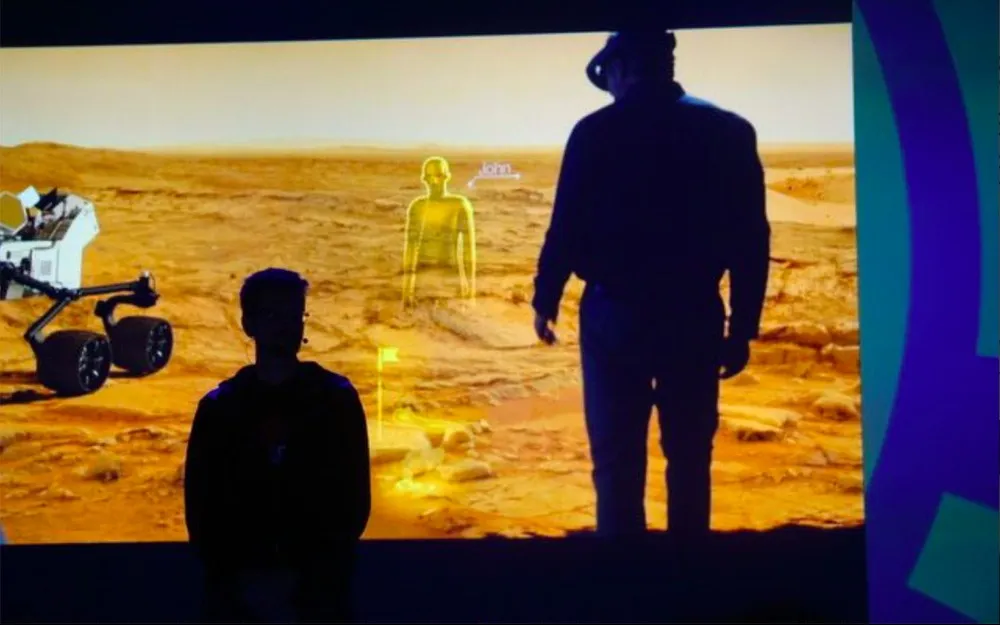Jeff Norris of NASA’s Jet Propulsion Laboratory was not who I expected him to be. Walking onto the stage in jeans, hoodie and bright red sneakers he further distanced himself from the bookish stereotype I was expecting from a NASA scientist. Over a rocking soundtrack, he announced NASA is already engaging in several VR/AR projects to increase the size and scope of their deep-space ambitions.
Among the efforts, Norris discussed NASA’s previously announced project Sidekick. This is an augmented reality program for HoloLens that allows on-the-ground experts to aid those in space.
“What if a scientist could stand on mars without leaving his or her office,” said Norris.
The experiments to make this vision possible include using VR to allow earthbound geologists to study Martian surfaces, enabling greater communication between space station astronauts and their counterparts on the ground, and allowing humans and robots to interact more cohesively than ever before.
Norris also showed video of a HoloLens NASA application functioning for the first time. The brief slice showed a team of NASA scientists examining a holographic rover in real-time. They seemed to be manipulating digital components and designing the overall structure on a rover each of them could see inside a HoloLens headset. The technology could help NASA design parts destined for outer space in a virtual workshop without spending millions in the design phase.
NASA’s presence at the Vision Summit alone speaks to the government organization’s passion for the industry, and the reality that VR is moving beyond games and into deeper realms of science and technology.
More news from the Vision Summit is still to come. Stay tuned.





























